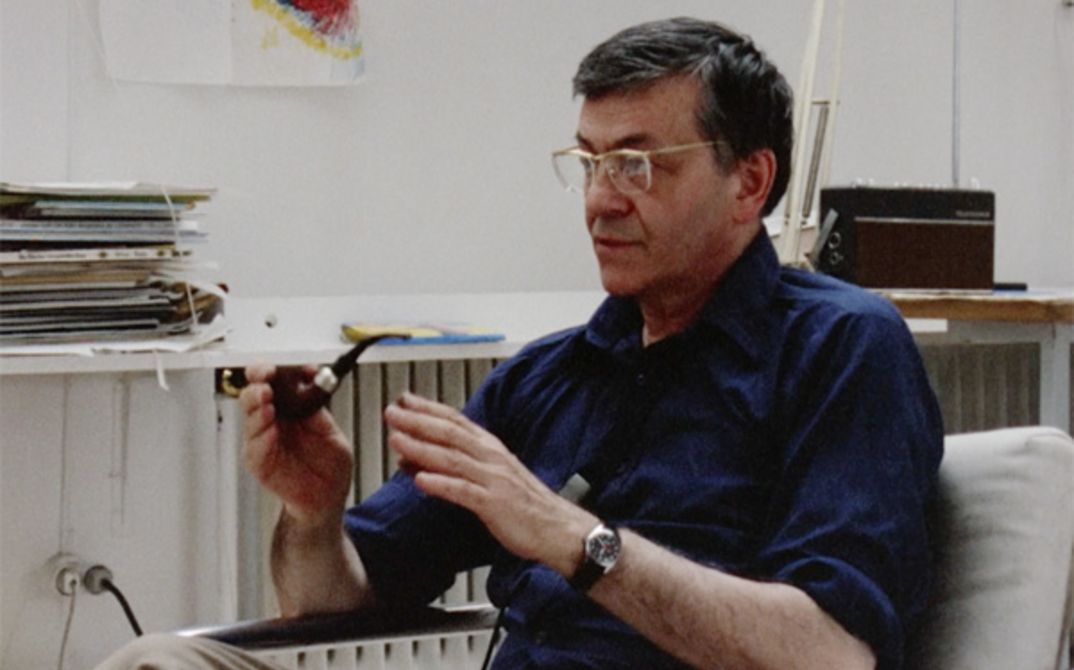“Zur Ansicht: Peter Weiss” and “Zur Ansicht: Peter Weiss. Dreharbeiten in Stockholm”
Harun Farocki shot his very first film, a short piece entitled Zwei Wege (Two Paths, 1966), for the Berliner Fenster program of the SFB. Over the following four decades. between Nicht löschbares Feuer (Inextinguishable Fire, 1969) and Sauerbruch Hutton Architekten (2013), several of Farocki’s films came to be with significant participation from public broadcasting. Commissioning Editors like Werner Dütsch, Ebbo Demant, and Inge Classen encouraged and fostered the filmmaker’s work.
During Farocki’s lifetime, in collaboration with the Deutsche Kinemathek – Museum für Film und Fernsehen and the Arsenal – Institute for Film und Video Art, research had already begun on the television films, which were in a wide variety of lengths. For the large Berlin retrospective in 2017/18, the project of making Farocki’s work permanently secure and accessible was concluded. This was made possible by close cooperation between Farocki’s production company, the Goethe-Insitut, and the participating television stations, and is the subject of discussion at the symposium “Recht auf Öffentlichkeit” (“Right to Public Access”).
The virtual cinema Arsenal 3 will stream ZUR ANSICHT: PETER WEISS (On Display: Peter Weiss) from 1979. The detailed conversation with Peter Weiss about “The Aesthetics of Resistance,” the second volume of which had just been published, was commissioned by the department “Literature and Language” (Christhart Burgmann and Annelen Kranefuss) at WDR and broadcast on October 19, 1979. In February of 1980 the film was seen in the “Informationsprogramm TV” of the International Forum of New Cinema. In the accompanying program text, Farocki writes: “Weiss has performed an unbelievable amount of research, studied the lives of people serving as models down to the tiniest detail, and attaches great importance to visiting the scenes of the action. The film gives an impression of his work.”
We can get an idea of Farocki’s own working methods from an hour of unused interview material, found in Farocki’s film estate, which has been overseen by the Harun Farocki Institut along with Antje Ehmann since 2015. It was digitized in 2016 on the occasion of Peter Weiss’s 100th birthday. We are presenting the material as it was found: as parts of the working print in black and white, rough, partly without sound, with clapper boards, dropouts, and other traces of the editing work.
